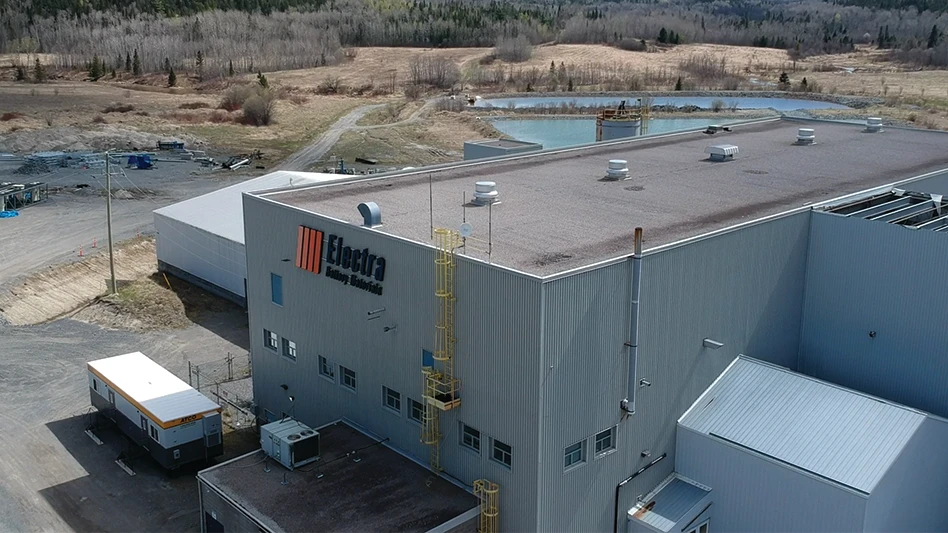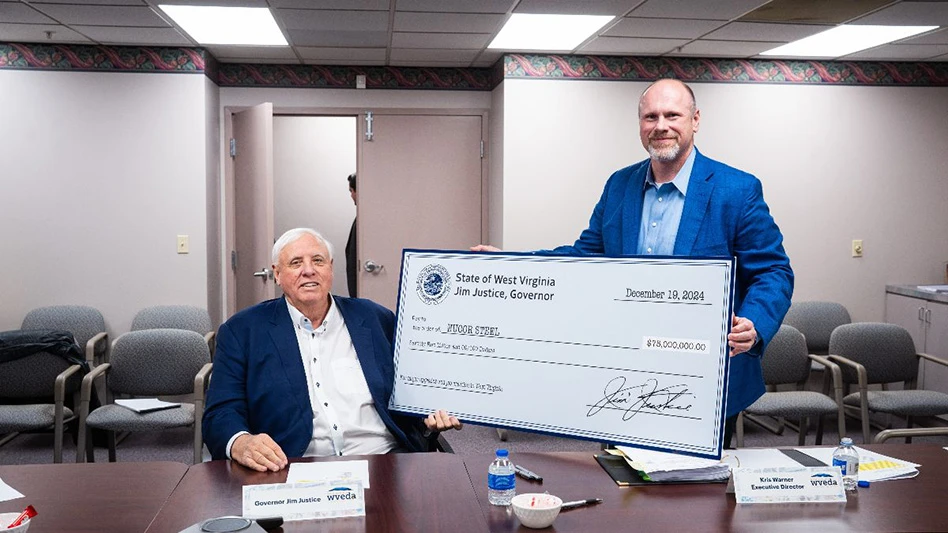Amixed C&D processing operation offers a glimpse of some of the most challenging aspects facing recyclers of any material.
Unlike loads of bottles, cans and newspapers heading to municipal material recovery facilities (MRFs), the truckloads of debris that arrive at a mixed C&D yard would be classified without hesitation by the casual observer as "garbage."
Even those with knowledge of the value of scrap metals would have to look closely at most of the truckloads to see what metals of value may be hidden within the wooden boards and soil within. Thus, even those familiar with recycling techniques may, at first glance, see more contaminants than commodities in a dump truck load of C&D debris.
But equipment makers have continued to devise machinery to help C&D processors separate out materials with a resale value, and persistent operators such as Don Hedges of Hedges Excavating Inc., LaGrange, Ky., have worked to maximize the use of such equipment and help cultivate end markets for the products that result from the process.
SETTING UP A SYSTEM
Hedges Excavating has been processing mixed C&D materials for more than two decades at its site northeast of Louisville, Ky. In addition to offering excavating and demolition services, the company places rental dumpsters and accepts demolition waste at its C&D transfer station/recycling center.
The sorting of materials at the transfer/recycling center has always been labor intensive, but recently Hedges decided to purchase additional automated screening and separating equipment to process its growing C&D materials stream.
"We processed approximately 25,000 tons of C&D materials in 1999," says Hedges, who notes that the materials were generated from the company’s own demolition business as well as from material collected from the company’s 200 rental dumpsters and materials brought to the transfer station.
Hedges says high-volume production, reliability and longevity were the key purchase criteria he used when shopping for screening, picking and grinding equipment. His search for the best equipment took him throughout the U.S. and to Europe to examine screening technologies involving disks, stars and trommel configurations. "I did my home work and took my time," says Hedges. "It’s a big investment and I wanted to be sure we were making the best decision."
Hedges ultimately went with an Erin Fingerscreener 165 model and other equipment made by Erin, which is marketed in the U.S. by Erin Systems Inc., Portland, Maine. Although the 165 model is marketed by Erin as a mobile screening machine, Hedges Excavating keeps its Fingerscreener in place at is LaGrange facility. The machine uses two vibrating decks of metallic " grizzly fingers" spaced out along a 16-foot span to separate larger materials from smaller ones.
Erin has impressed C&D contractors with its Fingerscreeners in part due to the machines’ ability to be self-cleaning and resistant to clogging, no matter what types of materials are introduced into the machine. The bottom deck of the two-decked 165 model can be equipped with either cascade fingers or with mesh, depending on what type of finished product the operator hopes to produce.
The system designed by Hedges and Erin Systems includes an in-feed conveyor that leads to the Fingerscreener. The Fingerscreener separates out the 30% of the incoming stream that consists of dirt and other "fines" from the remaining larger material, known as "overs." While the overs head to a picking table (also designed by Erin), the fines are fed to an Erin Starscreener for further processing.
Pickers working along the table sort the "overs" looking for marketable block, brick, asphalt, steel, wood, cardboard, paper and nonferrous metals. The 104-feet long picking table features ten stations per side, and has been designed with 14 feet of clearance underneath so that roll-offs or over-the-road trailers can be located underneath to accept materials (such as metal objects, bricks or paper) to be shipped to scrap metal and paper processors or to other destinations.
The Erin Starscreener system uses rubber stars to separate the organic materials into piles of wood waste, topsoil, and other materials sized to make a marketable commodity such as landscaping mulch.
The goal of the system is for incoming material to make just one pass before being separated out at the end of the process as a marketable commodity.
DIVERGENT STREAMS
Hedges’ goal is to divert up to 85% of the debris he takes in from going to a landfill. Separating out marketable metals, paper and crushable secondary aggregates is an important part of reaching that goal, but wood and fines make up a part of the stream that cannot be ignored.
Most of the wood reclaimed by Hedges Excavating heads for the grinder and is marketed as mulch. The company has also made a successful effort to sell a portion of its fines stream to operators of landfills as daily cover and also markets screened soil as fill dirt. Finding end markets for the fines is helpful to the company’s profitability, as not only is a small amount of revenue generated when such materials are sold, but the cost of transporting and landfilling the heavy loads of dirt is also offset.
Metals and paper grades are, of course, sold into the established scrap markets, and Hedges Excavating also takes care to separate out resusable bricks for custom builders and other buyers of brick.
In addition to managing separate streams of recyclable commodities, the company also has divergent streams of revenue and is not dependent on the sale of processed materials alone for its income.
Hedges Excavating charges a tipping fee just as a landfill would to accept C&D materials at its site, and also earns money on the rental from its dumpsters and the tipping fees resulting from the disposal of their contents.
Don Hedges’ roots are in demolition, but he notes that "my demolition and dumpster businesses led me into recycling when landfill costs continued to rise."
While the road to being a C&D pioneer has by no means been a care-free one for Hedges, he says he has benefited from his decision to enter the market during its infancy. "I am the only company set up to accept the volume (of C&D debris), sort it, recycle it and not fill up landfill space," he says of his competitive situation in the Louisville region.
FEELING UNAPPRECIATED
As with many recyclers, Don Hedges says that his efforts to conserve resources and save landfill space are not always appreciated or are misunderstood by segments of the public. The NIMBY (not-in-my-back-yard) phenomenon has at times made growth and expansion plans difficult for Hedges to rely on.
"The public does not want these facilities, and neither do local politicians. They think of it as a landfill," he says. Hedges is not restrained in his comments toward elected officials who do not do their research into the benefits of C&D recycling toward meeting landfill diversion goals before responding to noise or dust complaints from constituents. "These officials are only concerned about being re-elected into office, and therefore will not allow any of these facilities [to be cited in new locations]."
Hedges acknowledges that noise, dust and truck traffic are a part of doing business for Hedges Excavating, but adds that the company has been the only one in its region to step forward with C&D recycling solutions.
He notes that the company’s variety of activities makes it a service provider to several segments of local industry, including land developers, builders, and home owners. Hedges Excavating also employs 50 people.
The ongoing effort to remain in compliance with zoning ordinances is part of the reason Hedges is quick to point out that owning and operating a C&D recycling firm is not a sure-fire way to end up on the cover of Success magazine.
"A person has to be willing to put in many long hours, hard work, and have lots of luck," he answers when asked what it takes to be successful in the C&D materials processing business. C&D
The author is editor of C&D Recycler.

Explore the March 2000 Issue
Check out more from this issue and find your next story to read.
Latest from Recycling Today
- Sortera Technologies ‘owning and operating’ aluminum sorting solutions
- IDTechEx sees electric-powered construction equipment growth
- Global steel output recedes in November
- Fitch Ratings sees reasons for steel optimism in 2025
- P+PB adds new board members
- BlueScope, BHP & Rio Tinto select site for electric smelting furnace pilot plant
- Magnomer joins Canada Plastics Pact
- Out of touch with reality





